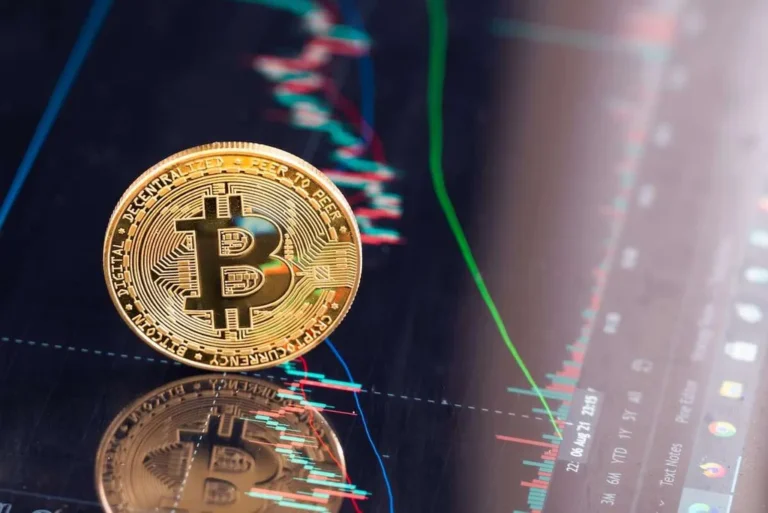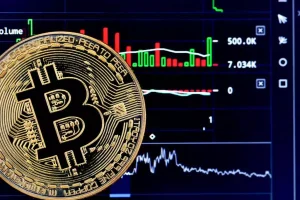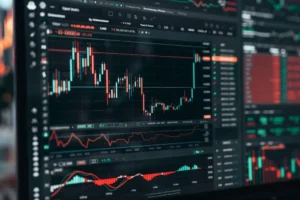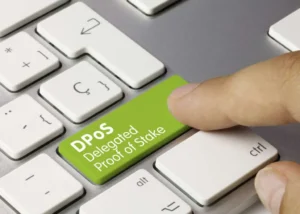Tokenization, or the process of releasing virtual assets in a distributed blockchain environment, is a revolutionary approach in the crypto sector. As the popularity of digital money grows, international financial institutions and analysts claim that tokenization will become the basis of the digital economy. Companies specializing in distributed ledger technology anticipate the value of the tokenized sector to reach $3.95 billion by 2025 and $12.83 billion by 2032. One of the primary factors in understanding the financial sector’s interest in tokenization is synthetic assets. Below, we will detail the principles of their operation and main advantages.
A Closer Look at Crypto Synthetic Assets
This is a category of virtual financial resources that imitate the cost of real-world assets (RWA), including securities, goods, fiat money, or other crypto coins, without the need to buy the basic resources.
Such synths are created with derivatives and digital contracts in the decentralized finance (DeFi) system. These tokens may generate distributed smart contracts in the digital ledger space, including Ethereum, and utilize collateral to provide value. They also control the cost of target resources and enhance cooperation with derivatives.
Below, we will look at the principle of their operation.
- Token and smart contract. As was said above, synths are connected with digital contracts. They deal with various protocols. They control the price of the basic resource and ensure the synthetic version reflects it correctly. If you are interested in platinum, you may get the synths it is linked to without buying the precious metal.
- Derivatives and oracles. Modern synths are often based on derivatives, including options and futures, so market participants may speculate on their future value growth. Oracles, external sources of information that display the final updates on the worth of main assets, ensure the veracity and relevance of the data.
- Decentralized systems. Synths are a primary component of DeFi. On portals like Synthetix, specialists can generate and sell resources without the need for middlemen. They may be tied to various assets, including virtual cash, raw materials, and securities.
- Liquidity and collateral. To work with synths, users need to consider collateral, such as crypto coins. This forms the liquidity of the portal, allowing market participants to perform transactions with synthetics. An interested party can lock up crypto coins as collateral and generate synthetics that track the cost of another resource.
Once synths are created, users may store or trade such instruments on a cryptocurrency exchange.
With synthetics, market participants gain access to different financial areas and resources, which decreases their dependence on standard middlemen. Market participants should approach synthetics with caution, as these tools come with additional complication and risk. They require an understanding of how they work and their impact on investment tactics.


Turnkey Brokerage Solution For Your Business
Get the most profitable fully licensed fx/crypto brokerage software or ready-to-operate business in 48 hours. Best-in-class web & mobile trading platforms, sales-driven CRM, full integration with MT4/5, and 150+ payment providers.
Categories of Crypto Synthetic Assets
There are multiple classes of synths that people interact with most frequently in the crypto sector. Let’s analyze the most popular options.
- Goods and shares. They can be converted into virtual instruments through tokenization. These are traditional products, including gold, oil, and minerals. Users may choose a fractional distribution of such resources. The Synthetix portal has sOIL or sGOLD categories that reflect the cost of oil and gold. Without such resources, market participants may earn from their cost adjustments.
- Stablecoins. They are needed to present the value and reliability of classic fiat money, including the dollar, euro, or yuan. They enable market participants to enter into contracts for commodities and services without worrying about the volatility of cryptocurrency coins. One of the achievements in the sector is the adoption of the SUSD stablecoin from Synthetix, which is tied to the US dollar exchange rate 1:1.
- Income tokens. In the DeFi space, synthetic resources also offer traders staking and lending benefits, providing a passive profit stream from asset ownership. A popular option is the virtual token cDAI Compound created.
- Leverage and inverse. This is the last category, created to strengthen or balance the cost fluctuations of the main assets. This category of resources provides income even if the cost of the basic resource decreases, while leverage synths increase both incomes and losses. The most famous option is BTC3L (Binance leveraged tokens). Its key task is to guarantee a threefold daily profit, taking into account the cost of Bitcoin.
Before investing in synthetic assets, analyze the strengths and weaknesses of each category and choose the optimal solution.

Traditional vs. Crypto Synthetic Assets
Traditional assets are real objects or financial resources that are bought and sold on reliable markets, e.g., securities and goods. Meanwhile, synthetic assets crypto are virtual blockchain-backed embodiments that imitate the worth and efficiency of standard assets.
Traditional resources have a real or paper form, while synthetic derivatives are represented only in virtual format on the blockchain system. In the table below, we compare these types of investments in more detail.
| Criteria | Standard Assets | Synths |
| Implementation | Physical or financial form | Virtual |
| Availability | Public | DeFi System |
| Ownership | Physical | Virtual |
| Liquidity level | Restricted | Maximum |
| Programmability | Minimal | Digital contract setup |
| Legislative monitoring | Significant | Developmental |
| Custodial issues | Typically required | Changing |
| Counterparty risks | Centralized | Decentralized |
| Transparency | Varies | On-chain transparency |
| Resource selection | Restricted | Colossal |
| Access | Restricted | Suitable for all |
Synths suggest numerous benefits over traditional instruments, including inclusivity, liquidity, and configurability; however, they also pose some risks, which we will analyze below.
Applications of Crypto Synthetic Assets
Such tokens are of interest to many market participants. Let’s consider the situations in which they can provide the maximum profit.
- Commercial and investment potential. Synths suggest access to advanced commercial and investment tools. They enable participants to conduct operations using borrowed funds. This boosts their exposure to changing market conditions and potentially creates more significant revenue (or losses) than they could receive through traditional commercial processes. Such tokens encompass many basic resources in the crypto sector, including shares, bonds, and goods. Now, every investor may form a diversified portfolio.
- Yield and liquidity provision. Industry participants who choose to interact with synths in the DeFi environment can test yield farming. They receive additional synthetics for activities related to the provision of liquidity and DeFi procedures. Such tokens expand liquidity pools and the full liquidity of DeFi systems. This simplifies trading operations, lending, and borrowing in a decentralized environment.
- Risk mitigation and hedging. Market participants can utilize inverse synths as advanced hedging tools to guard their portfolios from a sharp decline in the value of the main asset. In addition, synthetic stablecoins are a profitable alternative to classic stablecoins, which protects the price of tokens from the volatile nature of the market.
We recommend analyzing your tasks, priorities, and financial capabilities before choosing a suitable type of activity.
Benefits and Drawbacks of Synthetic Assets
Synthetic assets suggest several profits over their real-world counterparts that may be of interest to DeFi traders. Below, we will look at the key parameters of synths that every trader should know.
- Wide-ranging portfolio. With synths, crypto sector participants may access promising financial tools inside and outside Web3. People can add synthetic bonds, goods, and shares to their portfolio to mitigate risk.
- Maximum availability. Before the arrival of such instruments, participants from certain countries lacked access to specific asset classes. Traditionally, accredited and institutional investors could only work with derivatives. However, now anyone can indirectly work in limited markets using their computer or smartphone with an internet connection.
- Decentralization. The decentralized foundation of synthetics means you do not have to interact with intermediaries. Virtual contracts are responsible for all procedures, including collateralization, minting, and burning procedures. This eliminates censorship and opens synths to people worldwide.
- Decreased transaction expenditures. Synths are generated through digital contracts rather than the physical transfer of ownership. This enables them to be sold at a lower price than standard resources. The reduced cost makes synths an attractive solution for participants looking to cut their investment expenditures.
As we can see, synthetic assets suggest many exciting opportunities, but they remain an experimental technology. It is essential to recognize the risk factors connected with such tokens before engaging with them.
- Counterparty issues. Although synths operate on a digital ledger, there are still points of centralization. Market participants must trust counterparties to support the price of synths in stablecoins or centrally regulated wrapped tokens.
- Issues with crashes and hacks. This is a relatively new solution that lacks a long history of established safety or coding rules. Market participants must remember the experimental nature of such tokens, which means they are susceptible to issues such as bugs and a lack of oracle connectivity.
- Liquidity problems. Traders may face difficulties executing transactions at favorable prices due to limited liquidity, particularly in lesser-known synthetic programs. A drop in demand in DeFi could lead to raising closing costs and add slippage issues.
- Dependency on decentralized exchanges (DEX). The efficiency and sustainability of synths depend on the DEXs they operate on. There are always risks of overload, significant gas commissions, and system restrictions.
Users must realize and properly assess the risks before engaging with crypto synths. Conduct thorough research, read reviews about platforms that offer synthetic resources, and make informed decisions to mitigate potential risks and protect your savings in the DeFi environment.
Synthetic assets have a significant impact on the financial sector. Such tokens allow industry members to cooperate with standard resources while maintaining access to virtual operations. Synths are critical for traditional financial sectors and are gaining importance in the development of DeFi. This domain is in its infancy, and experts are expected to test new products in the future.






